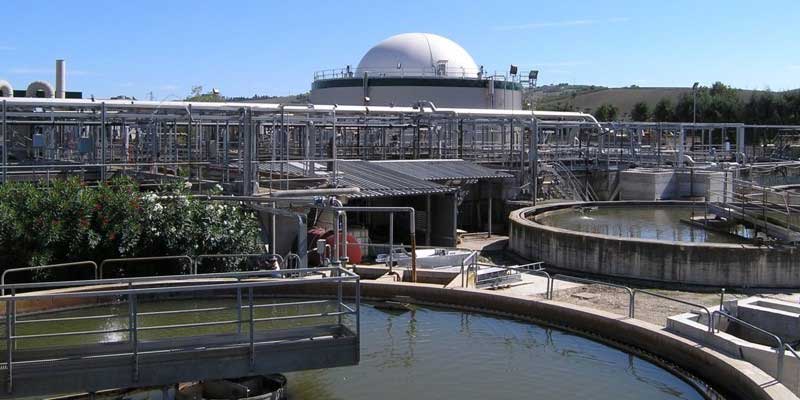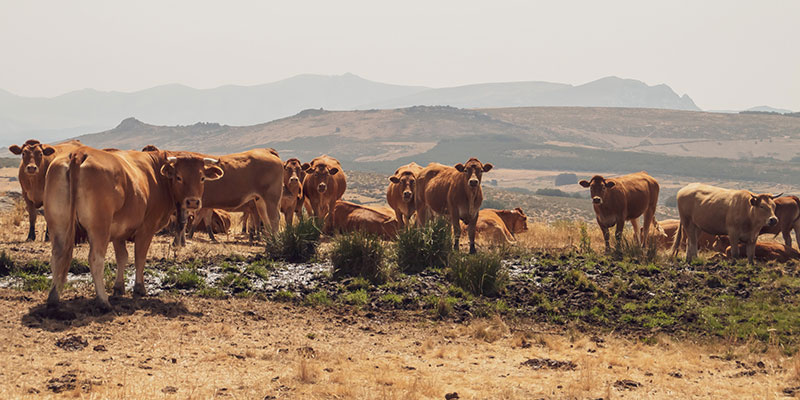From pastures to processing facilities, the meat industry is a resource-intensive one.
Anaerobic digestion can transform what was once considered a liability into a reliable energy source
The imperative for sustainable practices in industrial operations has never been greater. Among the sectors facing increasing pressure to reduce environmental impact is the meat-processing industry. While the public conversation around this industry often centers on emissions and waste, it is important to recognize the substantial technical sophistication and economic value it delivers. In this edition of Fluence’s Tech Talk series, we explore how water and wastewater professionals can play a vital role in enhancing sustainability through innovative, waste-to-energy strategies.
Understanding the Industry Landscape
The meat-processing industry is a cornerstone of the global economy. In the United States alone, it contributes more than $1 trillion in economic activity. The sector’s capacity for innovation is considerable, and spans mechanical systems, biological processes, and biosciences. It supports numerous downstream industries through the creation of by-products used in animal feed, fertilizers, fuels, cosmetics, and pharmaceuticals.
However, despite its technological advancement and economic scale, meat processing remains under close scrutiny for its environmental practices, particularly with regard to wastewater and energy consumption. The challenge, therefore, is clear: How can facilities continue to meet high production demands while improving environmental stewardship and operational efficiency?
Reframing Waste as an Energy Asset
Traditionally, residuals from meat processing — particularly those from washdown systems, cleaning-in-place (CIP) procedures, and organic by-products — have been treated as costly waste streams. These residuals, which include fats, oils, greases, and organic solids, are typically directed to wastewater treatment systems with the primary goal of safe disposal.
At Fluence, we advocate for a paradigm shift. We view these residuals not as liabilities, but as valuable sources of energy. Our objective is to develop economically viable systems that convert these waste streams into resources, enabling facilities to achieve net-positive energy performance.
Dissolved Air Flotation in Primary Treatment
Among the most common primary treatment systems used in meat-processing facilities is dissolved air flotation (DAF). DAF units effectively remove suspended solids, fats, oils, and greases from wastewater before downstream treatment or discharge. While these systems are widely implemented, their byproduct — DAF sludge — is often viewed solely as a disposal challenge.
This sludge, however, is highly energy-dense, containing lipids and volatile organic compounds that are well-suited for anaerobic digestion. Recovering energy from DAF sludge represents a substantial opportunity to enhance both environmental outcomes and operational efficiency.
Treatment Pathways and Their Implications
Facilities typically employ one of several treatment strategies based on site constraints and regulatory requirements:
- Lagoon-based systems: Common in rural areas due to lower cost and simplicity, anaerobic lagoons require significant land area and long retention times.
- Mechanical and biological treatment: Systems that incorporate mechanical pretreatment and aerobic or anoxic biological polishing can reduce discharge surcharges but often generate substantial sludge volumes without creating energy value.
- High-rate anaerobic treatment: When paired with effective pretreatment, these systems can reduce land requirements and generate biogas. However, if DAF is used upstream, much of the waste’s energy potential may already have been removed.
This last point that is critical: The DAF system, while essential for removing solids, also extracts the majority of caloric content from the wastewater. Therefore, targeting DAF sludge — not DAF effluent — for anaerobic digestion is key to maximizing energy recovery.
Energy Potential and System Design

An anaerobic digestion upgrade at this poultry processing facility allowed for increased production while lowering costs.
At a typical facility processing 1 million GPD (3,785 m3/d) of wastewater, DAF sludge can account for 30,000 to 50,000 GPD (114-189 m3/d). This material can generate upwards of 1,500 cubic feet (42.5 m3) of biomethane per ton. When aggregated, this equates to 30,000 to 40,000 kilowatt-hours of renewable energy daily.
Compared to traditional anaerobic lagoons, which may require 30 million gallons (113,562 m3) of volume, our high-rate digesters designed for DAF sludge typically require just 1 to 1.5 million gallons (3,785-5,678 m3). This substantial reduction in space requirements allows for broader applicability, particularly in land-constrained sites.
Economic and Environmental Benefits
From an economic perspective, facilities of this size can expect to reduce operating costs by more than $1 million annually. Return on investment for these systems typically ranges between two and three years, independent of any incentives or tax credits available under recent legislation such as the Inflation Reduction Act.
Environmentally, the benefits are also significant. A facility generating 30,000 kilowatt-hours per day can offset more than 11,000 tons of carbon dioxide emissions annually — equivalent to removing more than 2,400 gasoline-powered vehicles from the road. These systems contribute meaningfully to carbon reduction and corporate sustainability goals.
Implementation Examples
Fluence has implemented these systems across a variety of facility types. In one cattle operation supporting approximately 1,200 head, a 1.3-million-gallon (4,921 m3) digester processes DAF sludge, tallow, and solids to generate enough energy to offset the entire wastewater treatment load. In another case, a poultry-processing facility with a smaller digester volume of approximately 790,000 gallons (3,900 m3) produces more than 50,000 kilowatt-hours per day through the digestion of mixed sludges and rendering by-products.
These cases demonstrate the feasibility and scalability of this approach across different operational scales and feedstocks.
Future Focus
The potential for energy recovery from wastewater in meat-processing operations is considerable. By shifting focus toward high-strength waste streams such as DAF sludge, facilities can not only reduce disposal costs but also generate meaningful quantities of renewable energy.
The path to sustainable meat processing lies in innovation, and the integration of waste-to-energy solutions offers a compelling avenue for environmental and economic advancement.
To learn more about how anaerobic digestion can benefit your enterprise, contact Fluence. Our experts can work with you to determine feasibility and benefits.

